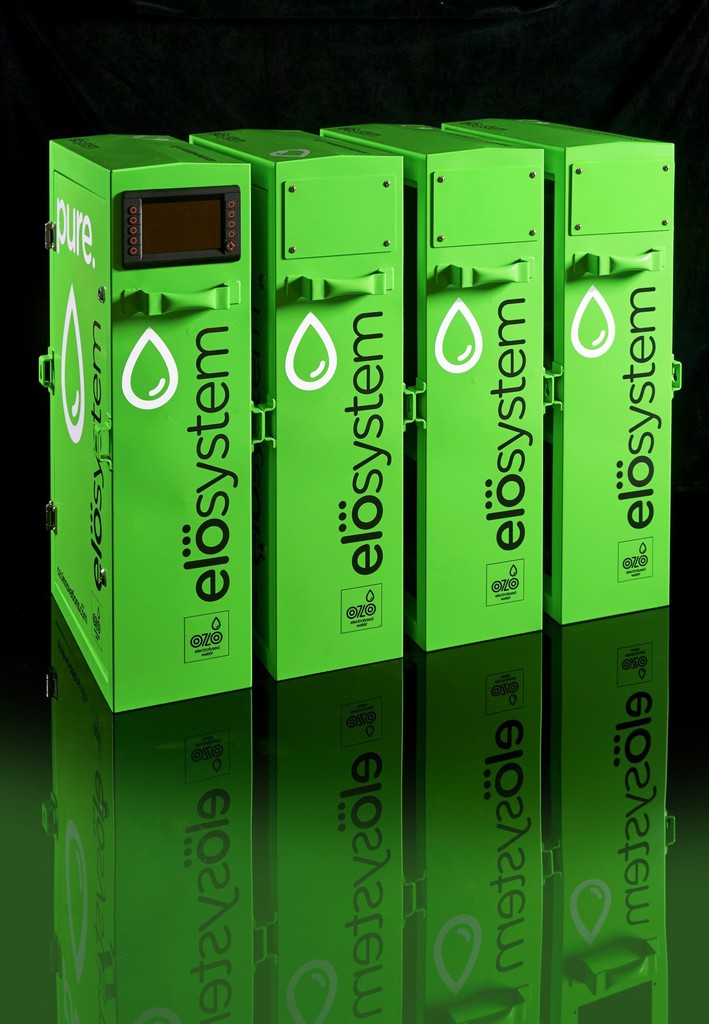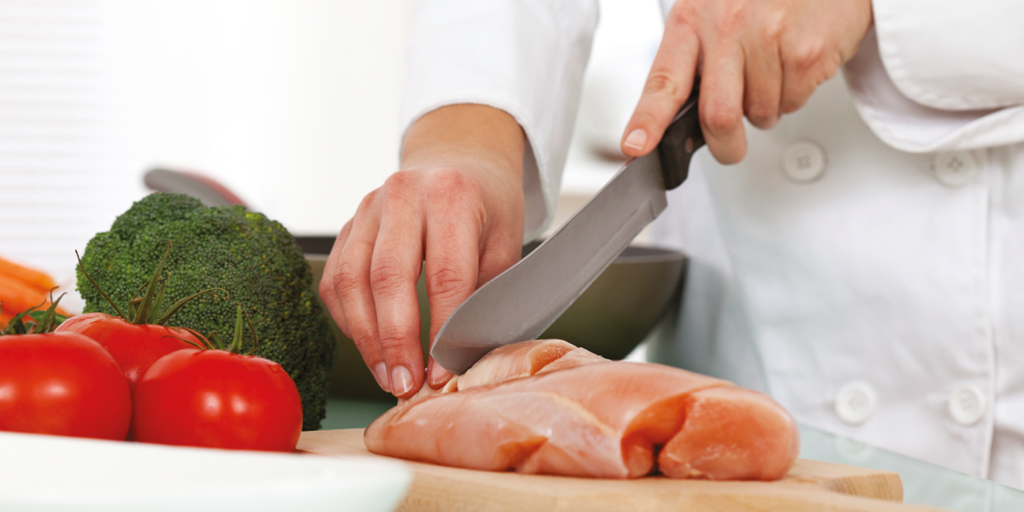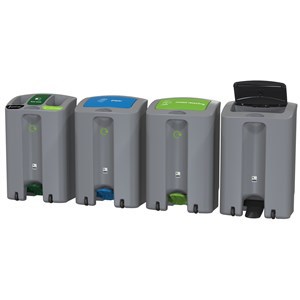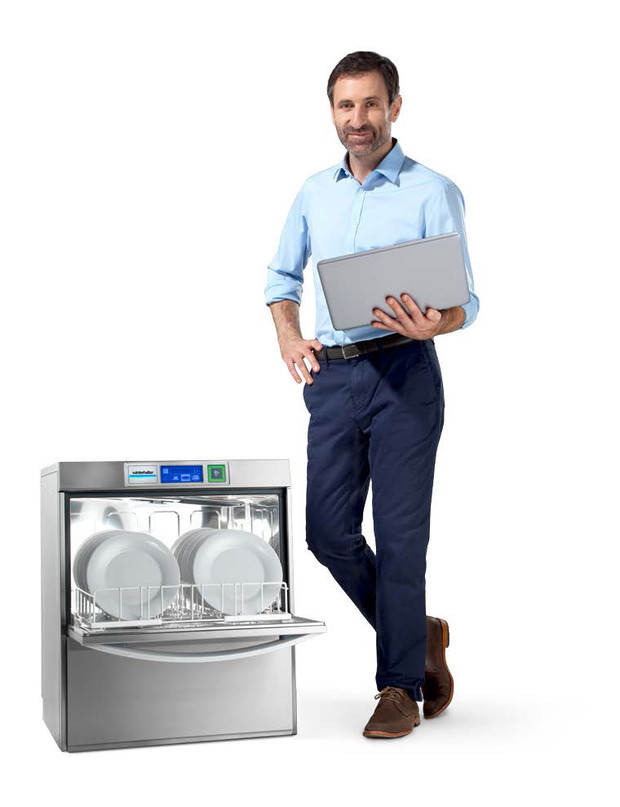The recipe for success
Creating a safe and healthy environment through cleaning is always important – but when that’s in a food area, the demands are even higher. With risks to public health significant, the application of scientific knowledge is essential, explains Delia Cannings, of training and solutions provider Environmental Excellence Training & Development

Ingesting food stuffs contaminated through poor standards of cleaning or incorrect use of chemicals is a serious matter. The UK has more than 500,000 reported cases of food poisoning each year with cross contamination one of the most common causes. Cleaning in catering environments sits alongside clinical areas in terms of risk, with levels of compliance different to other environments. Those Four Ts of cleaning – time, tools, technique and training – need to be robustly reviewed. With 24 hour facilities, the ‘clean as you go’ regime has to be stepped up so things are not left to deteriorate over a period of time.
Deep cleans
There will always come a point when you need to get behind that piece of equipment. Therefore your deep clean should be linked to routine maintenance – for instance having the oven serviced is the ideal time for accessing and cleaning the harder to reach areas. Frequency will depend on footfall and activity, but best practice is to deep clean quarterly. This should be documented; evidence can be used to substantiate audits and inspections.
Mould, fungi and spores
Kitchens, with areas of large chillers and hot food preparation areas, experience constant changes in temperature making them susceptible to mould, fungi and spores. Airborne, these can cause food poisoning. A thorough inspection routine is needed to look for potential troublespots. Your cleaning regime should stop the growth in the first place, but once you have them they are almost impossible to eradicate and you must clean in a way to keep on top of them. Steam cleaning is good for helping to both prevent and alleviate the problem; and look for a cleaning agent with properties to restrict their growth.
Cleaning equipment
A look in any cleaning cupboard will tell you a great deal about the service that is given, with safe, orderly storage and decontamination of equipment essential. In food prep areas the storage of cleaning agents should be as far away as possible, ideally with doors locked and key coded to allow authorised access only.
There is no national scheme for colour coding but it is a vital tool and a concept easily understood by those in kitchens familiar with colour coded chopping boards.
Personal hygiene
There are of course personal hygiene regulations: uniforms must be clean , hair must be in a net or beards covered; jewellery kept to a minimum as it can harbour bacteria; cuts covered with a plaster of a colour which would stand out if dropped in food; no nail varnish; closed-toed shoes; and legs covered as they will shed skin. All of these aspects should be followed by those cleaning in food environments.
Floorcare
Never sweep in a kitchen as it will cause dust to circulate, so opt for a damp system. There is likely to be lots of stainless steel therefore cleaning operatives need to be trained in its particular care, avoiding any abrasive techniques.
Safety
Safety issues will include greasy and slippery floors; plug sockets which need to be masked off especially when introducing moisture; and ensuring equipment is switched off.
Chemicals
Chemical competence and an understanding of the four main groups of cleaning agents – neutral, alkaline, acid and cleaning disinfectant – will enable the operative to select the right agent for the type of soil needing to be removed.
Supporting staff
Any clean will only be as good as the person doing it, so remember that the cleaning resource is not just the equipment and consumables. The most valuable asset is the cleaning operative. If they are developed and supported, given the tools and time to do the job, you will get a great, professional clean.
The focus in food areas is – no surprise – the food, with cleaning too often a poor relation. Recently we have begun to realise that they are inter-related. I believe legislation in this area is crucial; we have specific requirements for those handling food, but not for those cleaning. It’s time for a minimum compulsory training requirement for people who clean for a living.
Deep cleans
There will always come a point when you need to get behind that piece of equipment. Therefore your deep clean should be linked to routine maintenance – for instance having the oven serviced is the ideal time for accessing and cleaning the harder to reach areas. Frequency will depend on footfall and activity, but best practice is to deep clean quarterly. This should be documented; evidence can be used to substantiate audits and inspections.
Mould, fungi and spores
Kitchens, with areas of large chillers and hot food preparation areas, experience constant changes in temperature making them susceptible to mould, fungi and spores. Airborne, these can cause food poisoning. A thorough inspection routine is needed to look for potential troublespots. Your cleaning regime should stop the growth in the first place, but once you have them they are almost impossible to eradicate and you must clean in a way to keep on top of them. Steam cleaning is good for helping to both prevent and alleviate the problem; and look for a cleaning agent with properties to restrict their growth.
Cleaning equipment
A look in any cleaning cupboard will tell you a great deal about the service that is given, with safe, orderly storage and decontamination of equipment essential. In food prep areas the storage of cleaning agents should be as far away as possible, ideally with doors locked and key coded to allow authorised access only.
There is no national scheme for colour coding but it is a vital tool and a concept easily understood by those in kitchens familiar with colour coded chopping boards.
Personal hygiene
There are of course personal hygiene regulations: uniforms must be clean , hair must be in a net or beards covered; jewellery kept to a minimum as it can harbour bacteria; cuts covered with a plaster of a colour which would stand out if dropped in food; no nail varnish; closed-toed shoes; and legs covered as they will shed skin. All of these aspects should be followed by those cleaning in food environments.
Floorcare
Never sweep in a kitchen as it will cause dust to circulate, so opt for a damp system. There is likely to be lots of stainless steel therefore cleaning operatives need to be trained in its particular care, avoiding any abrasive techniques.
Safety
Safety issues will include greasy and slippery floors; plug sockets which need to be masked off especially when introducing moisture; and ensuring equipment is switched off.
Chemicals
Chemical competence and an understanding of the four main groups of cleaning agents – neutral, alkaline, acid and cleaning disinfectant – will enable the operative to select the right agent for the type of soil needing to be removed.
Supporting staff
Any clean will only be as good as the person doing it, so remember that the cleaning resource is not just the equipment and consumables. The most valuable asset is the cleaning operative. If they are developed and supported, given the tools and time to do the job, you will get a great, professional clean.
The focus in food areas is – no surprise – the food, with cleaning too often a poor relation. Recently we have begun to realise that they are inter-related. I believe legislation in this area is crucial; we have specific requirements for those handling food, but not for those cleaning. It’s time for a minimum compulsory training requirement for people who clean for a living.




